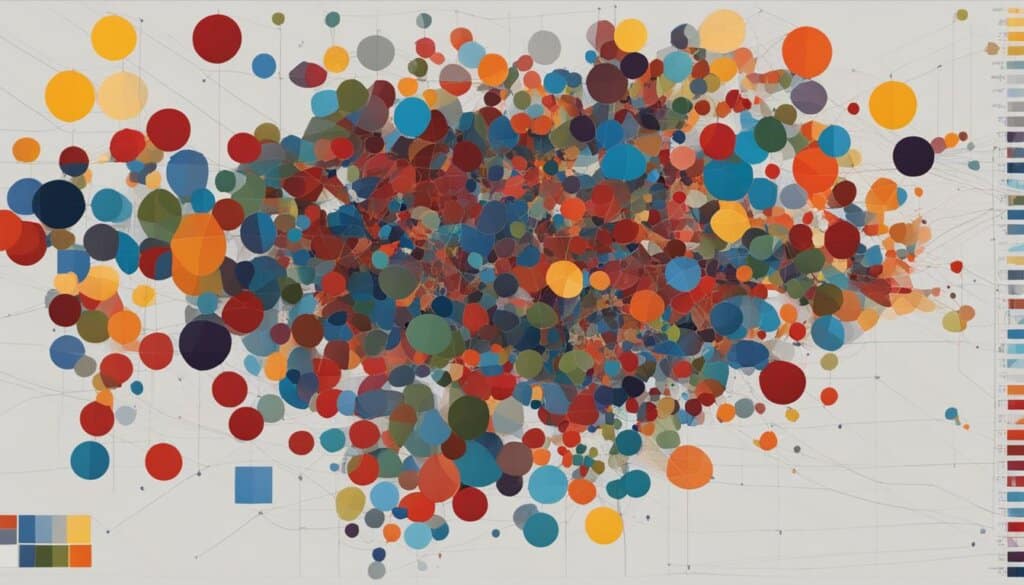Table of Contents
Raw data refers to unprocessed information that has not undergone any form of analysis or organisation. It is often collected from various sources and can take different formats, such as text, numbers, images, audio recordings, and videos. Raw data has the potential to become valuable information, but it requires processing, cleaning, and analysis to extract insights and make it usable.
The processing of raw data involves tasks like data cleaning, sorting, filtering, and formatting. Once processed, raw data can be used for data analysis, trend identification, decision-making, and the creation of predictive models. Raw data is a valuable resource for businesses and organisations as it provides a foundation for understanding customer behaviour, optimising marketing campaigns, improving business practices, and making data-driven decisions.
Continue reading to discover how raw data works and the value it holds.
How Raw Data Works
Raw data is a powerful resource that captures and processes information from various sources. While the human brain can intuitively process raw data, transforming it into meaningful insights, computers require data processing techniques to unlock its potential. Data processing involves a series of activities, such as cleaning, organizing, and formatting, that enable raw data to be transformed into usable information. This section explores how raw data works and the steps involved in its processing.
The human brain is a remarkable processor, capable of converting flashes of light and sound into objects and making informed decisions based on the processed data. However, computers lack this intuitive processing ability, necessitating the use of data processing techniques. Through data processing, raw data undergoes a transformation that enhances its usability and accessibility. Cleaning involves removing duplicates, outliers, and errors from the raw data, ensuring that it is accurate and reliable.
Once the raw data is cleaned, it can be organized and structured, making it easier to analyze and interpret. Formatting the raw data according to predefined standards ensures consistency and compatibility across different systems and applications. This standardized format facilitates the integration of processed data from one system into another, enabling seamless data utilization.
Data utilization plays a vital role in harnessing the value of raw data. Processed data can be fed into databases or data warehouses for further analysis, allowing organizations to uncover trends, patterns, and relationships. This analysis provides valuable insights that drive decision-making and inform strategic initiatives. Additionally, processed data can be utilized in applications like machine learning models, predictive analytics, and artificial intelligence systems.
Benefits of Data Processing
- Data Transformation: Data processing ensures that raw data is transformed into a usable format, enabling its utilization for various purposes.
- Data Utilization: By processing raw data, organizations can leverage its insights to drive informed decision-making, optimize processes, and improve outcomes.
- Data Integration: Processed data can seamlessly integrate with other systems and applications, enhancing data utilization across different processes.
Raw data is like a rough diamond – it holds immense potential, but it requires careful processing to reveal its true value.
Next, we will explore in detail the different steps involved in processing raw data, including data cleaning, data preparation, data analysis, and data visualization.
Processing Raw Data
Processing raw data is a crucial step in unlocking its full potential and transforming it into valuable information. This process involves several essential steps that ensure the data is accurate, reliable, and ready for analysis. The key stages of processing raw data include data cleaning, data preparation, data analysis, and data visualization.
Data Cleaning
Data cleaning is the initial step in processing raw data. It involves identifying and rectifying any inconsistencies, errors, duplicates, outliers, or missing values present in the dataset. By removing these discrepancies, the data becomes more reliable and suitable for accurate analysis. Data cleaning techniques can include techniques such as pattern matching, data validation, and outlier detection to ensure the data’s integrity.
Data Preparation
Data preparation is the subsequent step, where the cleaned data is sorted, filtered, and formatted according to predefined standards. This process helps in structuring the data to make it more manageable and accessible for analysis. Data preparation techniques may include tasks such as data normalization, data transformation, and feature engineering to enhance the quality and consistency of the data.
Data Analysis
Once the data is cleaned and prepared, it is ready for analysis. Data analysis involves applying statistical techniques, algorithms, and machine learning models to uncover patterns, trends, correlations, and insights within the dataset. Through data analysis, businesses can gain a deeper understanding of their operations, customer behavior, market trends, and other valuable insights that can drive informed decision-making.
Data Visualization
Data visualization is the final step in processing raw data. It involves presenting the analyzed data in visual formats such as charts, graphs, and dashboards. Data visualization helps in effectively communicating complex information in a concise and easy-to-understand manner. Visualizations allow stakeholders to grasp meaningful insights at a glance, facilitating data-driven decision-making and deeper understanding of the data’s implications.
By following these steps of data cleaning, data preparation, data analysis, and data visualization, organizations can extract valuable insights from raw data and turn them into actionable information. This processed data can drive business growth, optimize processes and strategies, and make data-driven decisions that lead to increased efficiency and success.

The Value of Raw Data
The primary value of raw data lies in its potential to become valuable information through processing and analysis. Raw data itself has limited value without proper utilization. By collecting and storing raw data, organizations can leverage it for various purposes, such as gaining insights into customer behavior, improving marketing strategies, optimizing business practices, and making data-driven decisions.
Raw data can be stored in databases, data lakes, or data warehouses for future analysis and utilization. This allows businesses to access and analyze the data whenever necessary, enabling them to uncover hidden trends, patterns, and relationships that can drive significant improvements and innovation.
However, storing raw data may also pose challenges related to data privacy and security. It is crucial for organizations to implement robust data privacy measures and adhere to data protection regulations to safeguard sensitive information. Data anonymization techniques can be employed to protect personally identifiable information (PII) and ensure compliance with legal requirements.
Despite the challenges, raw data holds immense value for businesses and organizations in today’s data-driven world. It serves as a foundation for data analytics, enabling organizations to uncover valuable insights and make informed decisions. By harnessing the power of raw data, businesses can gain a competitive edge and drive growth in their respective industries.
FAQ
What is raw data?
Raw data refers to unprocessed information that has not undergone any form of analysis or organization. It can take different formats such as text, numbers, images, audio recordings, and videos.
How does raw data work?
Raw data is captured and processed from various sources. While the human brain can intuitively process raw data into useful information, computers require data processing techniques to transform raw data into usable information. Data processing involves activities like cleaning, organizing, and formatting the raw data.
What are the steps involved in processing raw data?
Processing raw data involves several steps. It starts with data cleaning to remove duplicates, outliers, and errors. Next is data preparation, where the data is sorted, filtered, and formatted according to predefined standards. Once prepared, the data can be analyzed to identify trends and patterns. The final step is data visualization, where the analyzed data is presented in visual formats like charts and graphs.
What is the value of raw data?
The primary value of raw data lies in its potential to become valuable information through processing and analysis. It can provide insights into customer behavior, improve marketing strategies, optimize business practices, and support data-driven decision-making. Raw data can be stored in databases, data lakes, or data warehouses for future analysis and utilization.













